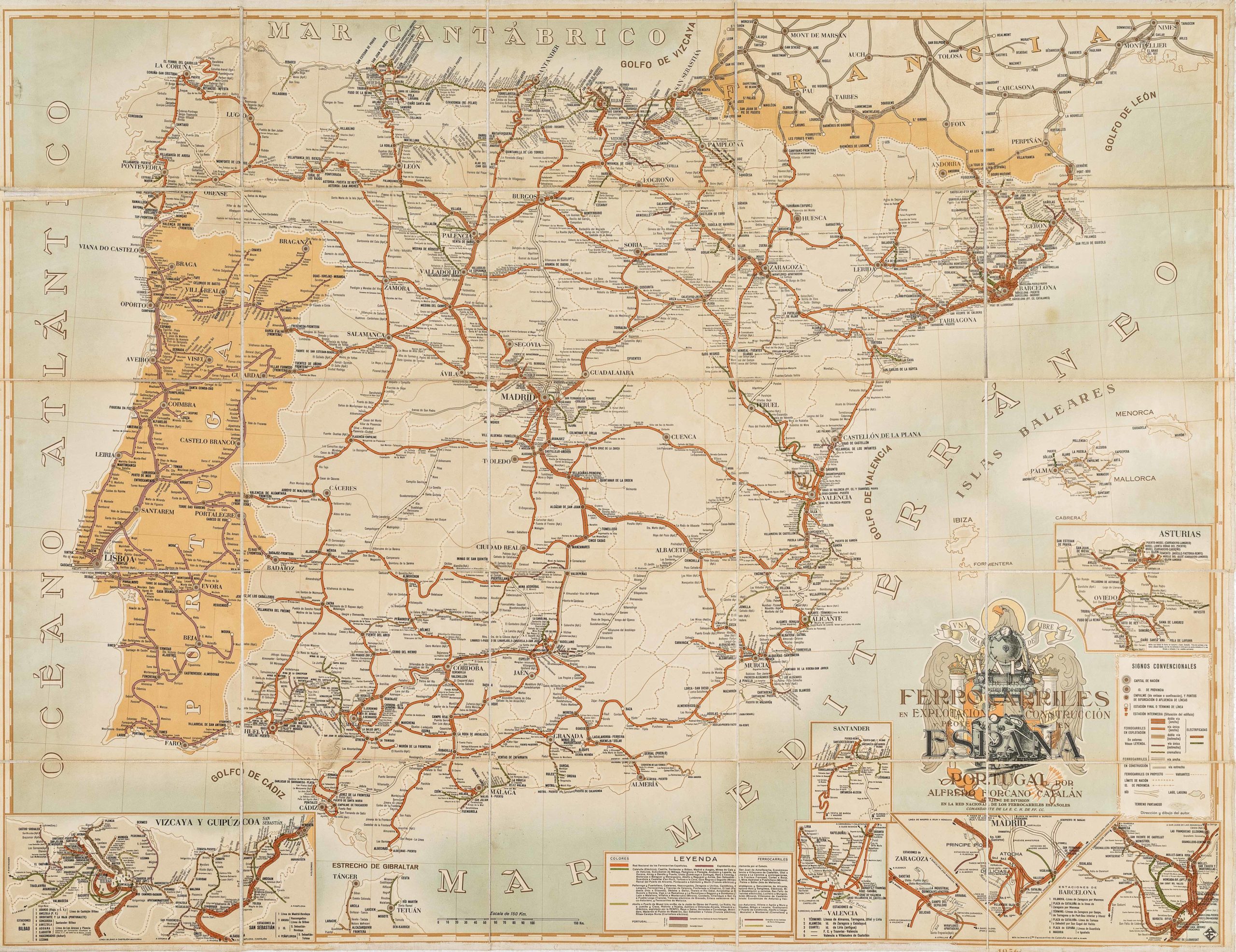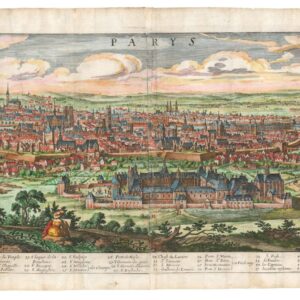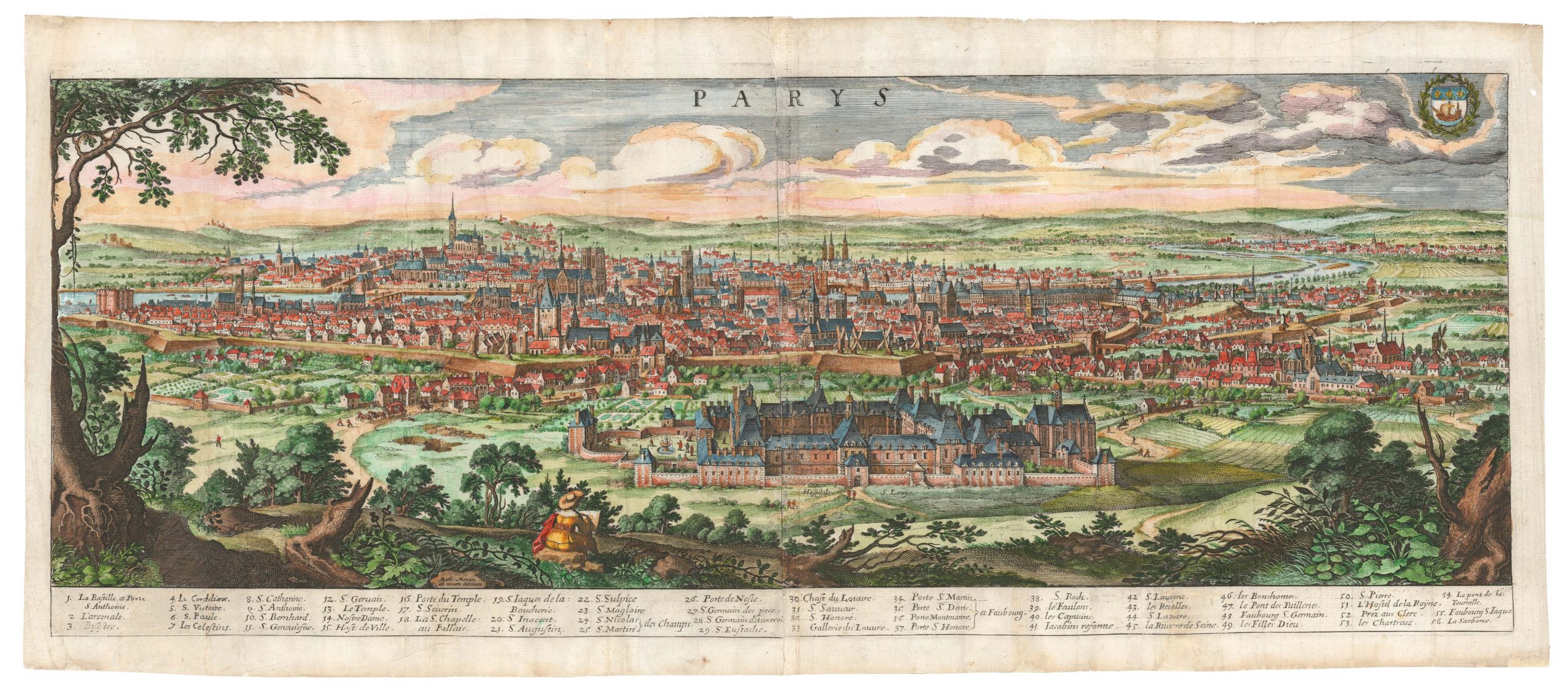The first modern map of France.
Totius Galliae Exactissima Descriptio.
Out of stock
Description
This rare double-sheet map of France was compiled and released by Venetian publisher and mapmaker Paolo Forlani in 1566. It is closely based on the original monumental four-sheet map of France by Oronce Fine, an early cartographic accomplishment that unfortunately no longer survives in its original form. As this map explicitly was intended as an adaptation (and acknowledgment) of Fine’s pioneering work, most of this description will focus on the ways this source map pushed the boundaries of cartography forward.
Before proceeding to Fine, a note should be made on the large cartouche in the upper right-hand corner. This cartouche informs us that Forlani’s adaptation is dedicated to Marcus Antonius Radici, an Italian nobleman and patron of Renaissance art about whom little is known.
A Milestone in Renaissance cartography
Oronce Fine’s Nova totivs Galliae descriptio was first published in Paris in 1525 and marked a critical departure from earlier depictions of France. Fine stated his goal was to produce a comprehensive map of Gaul that also would meet the needs of geographers and future scholars. He aimed to establish and revise the latitudes, longitudes, and locations of critical places, rivers, and mountains while leaving room for future updates and corrections. This innovative approach involved a systematic collection of geographical data, in essence, laying the groundwork for the more accurate mapping techniques that characterized the 16th century.
Fine depicted his homeland as a natural country, defined and delineated by physical boundaries (i.e., the Rhine, Alps, and Pyrenees). While even this model did not correspond to the political reality of the time, Fine took France’s territorial ambitions one step further by expanding the scope of his map to include northern Italy and the Adriatic. The cartographic enlargement of France mirrored French political aspirations, which were set on claiming new territories in the Alps and north Italy. The geopolitical ambitions are also seen in Fine’s distinction between Transalpine Gaul (i.e., areas outside the Alps) and Cisalpine Gaul (i.e., areas on the Italian side of the Alps), which purposefully formulates a concept of Renaissance France as a much broader geographical entity; one that was completely divorced from the old Roman divisions of Gaul (e.g., Gallia Belgica, Celtica, or Narbonensis).
Even though the Treaty of Cateau-Cambrésis (1559) curtailed France’s expansionist aspirations, Fine’s map remained a powerful symbol of these territorial fantasies. Despite this apparent political connotation, Forlani emulates Fine’s cartographic appropriation by including the Italian peninsula as far south as Rome and east as Forlani’s hometown of Venice.
Fine’s original map was published by Simon de Colines. Subsequent editions, including one published in 1557, have not survived in full. However, we were issued intermediate versions based on Fine’s original woodblocks by Parisian printer Jérôme de Gourmont in 1538 and 1554, allowing us to recognize this map’s heritage.
As noted in his original Cartouche, Fine was particularly interested in improving methods for determining latitudes and longitudes, which led to new projections. One of Fine’s significant contributions was the development of the méthéoroscope géographique, a modified astrolabe combined with a compass, which he used to calculate longitudes based on the moon’s movement. In this manner, his work amalgamated the Ptolemaic tradition with modern observational techniques.
A Network of Renaissance Mapmakers
Paolo Forlani belongs to the so-called Lafreri School of cartography, which refers to a group of mapmakers, engravers, and publishers who worked primarily in Rome and Venice from around 1544 to 1585. This loosely connected network of printing professionals produced a range of individual maps, which were often compiled into composite atlases based on a buyer’s specific preferences. Thus, most original Lafreri Atlases are unique compilations that combine maps and views in various formats.
Giacomo Gastaldi and Paolo Forlani were among the most renowned mapmakers associated with the Lafreri School. The School’s namesake, Antonio Lafreri, was a prominent map dealer whose catalog of maps, published in 1572, helped solidify the group’s legacy. Lafreri’s name has since become synonymous with the collaborative work of Italy’s many talented Renaissance cartographers.
Census
Fine’s original map has been lost to history, and the early emulations by Gourmont are extremely rare. The only acquirable map to derive from Fine’s original is Forlani’s 1566 edition, which, like its predecessors, is remarkably rare. In the past 15 years, only a single example of this map has appeared at auction or in dealer catalogs, underscoring its value and scarcity.
The OCLC lists only a few institutional holdings of this map, including examples at the BNF (no. 494996413), the Sorbonne (no. 964660495), and the British Library (no. 557424516).
Cartographer(s):
Paolo Forlani (1525–1581) was an Italian mapmaker primarily active between 1560 and 1571. Born in Venice around 1525, Forlani became one of the most prominent mapmakers of the 16th century. He is particularly noted for his skill in engraving and publishing maps, many of which were produced for inclusion in composite atlases. He collaborated closely with other mapmakers of the time, including Giacomo Gastaldi and Antonio Lafreri, whose works formed the basis of the Lafreri School of Cartography.
During his lifetime and today, Forlani was held in high regard for the quality and detail of his maps, and he played a crucial role in cementing the paradigms of Renaissance cartography.
Condition Description
Very good, with crisp and clear printing. Very minor spots of foxing and some wear along centerfold. An excellent example of a very rare map.
References








